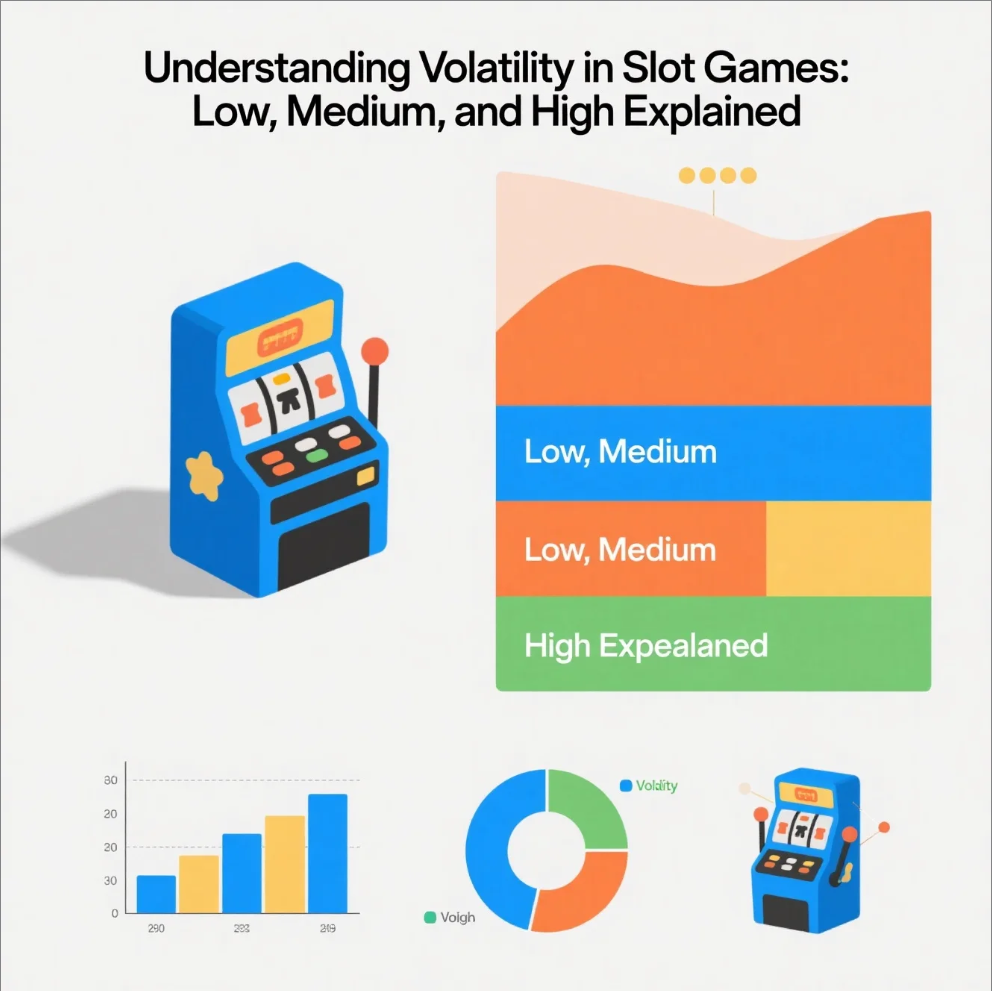
When playing slot games, one term often comes up: volatility. Also referred to as variance, volatility is a measure of risk and reward, helping players understand how often and how much a slot game may pay out. Understanding volatility can improve your gameplay strategy and help you choose the right game for your style.
What is Slot Volatility?
Slot volatility indicates how a game behaves in terms of payouts:
- Low Volatility – Frequent but smaller wins, suitable for players who prefer steady, low-risk play.
- Medium Volatility – Balanced gameplay, offering a mix of small and occasional larger payouts.
- High Volatility – Rare but significant wins, ideal for players seeking big jackpots but willing to face longer dry spells.
Low Volatility Slots
- Frequent wins, but smaller amounts.
- Great for beginners or casual players.
- Longer gameplay without quickly depleting your bankroll.
Example: Classic 3-reel slots with simple paylines.
Medium Volatility Slots
- Mix of small and moderately sized wins.
- Offers excitement without excessive risk.
- Suitable for players with some experience and a medium-sized budget.
Example: Popular branded 5-reel slots with bonus features.
High Volatility Slots
- Wins are less frequent but can be very large.
- Requires patience and a larger bankroll.
- Often includes bonus rounds, free spins, or progressive jackpots.
Example: Progressive jackpot slots and high-risk thematic games.
How to Choose the Right Volatility
- Consider Your Bankroll – Low volatility suits smaller budgets; high volatility requires more capital.
- Decide Your Goal – Casual fun vs. chasing big wins.
- Game Preference – Bonus features, theme, and gameplay can influence enjoyment regardless of volatility.
Final Thoughts
Understanding slot volatility is key to maximizing enjoyment and managing risk. By knowing whether a game is low, medium, or high volatility, you can tailor your strategy, control your bankroll, and have a more rewarding gaming experience.
Recommend:



